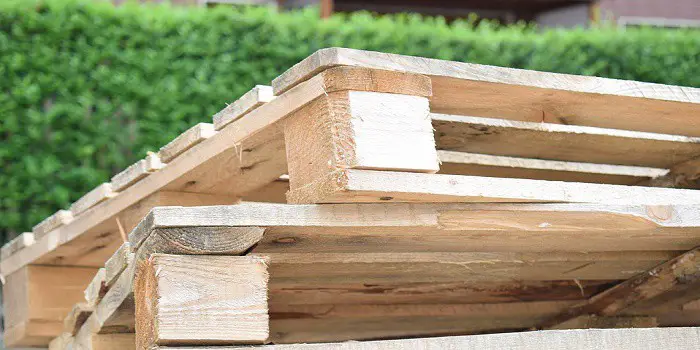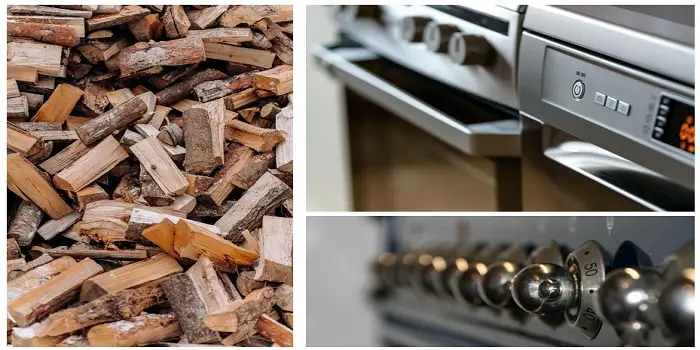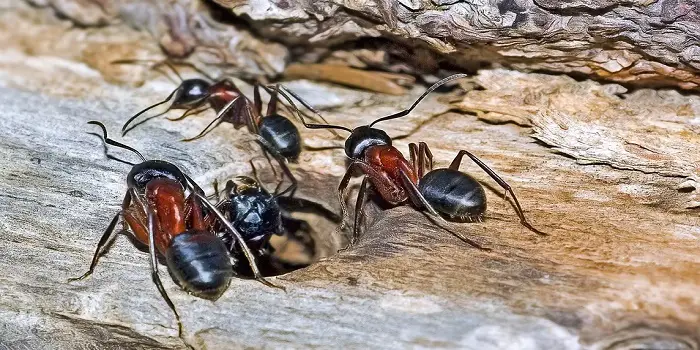
No, carpenter ants don’t eat wood. No matter what variety of soft or hardwood you have in your home these little architects don’t eat it—they just excavate it to build their nests.
The fact is since carpenter ants can’t digest cellulose (the main ingredient in wood), these small insects only chew through the timber to make holes, tunnels, or galleries where they can safely raise their young. And they do so with the help of their strong jaws without consuming the dry wood material.
Be aware that carpenter ants aren’t in a hurry—they’re more of a slow and steady demolition crew.
So, if you were to ask how fast can carpenter ants wreck your wood, it can take 3 to 6 years for them to cause serious damage to a wood structure, depending on how large and active the colony is.
Regular inspections and quick action therefore can stop these tiny renovators before they turn your home into a fixer-upper.
Will Carpenter Ants Eat Pressure-Treated Wood?
Pressure-treated wood is even more resistant to their attack because of the chemical agents they are being subjected to under strong pressure.
This means carpenter ants will tend to stay away from the lumber that is treated with chemical preservatives and processes that make them less susceptible to decay, rotting, and insect infestation.
Just like wood, carpenter ants also do not eat trees. They will only make a tunnel that can go along to the heartwood and can even cause a tree’s death over time.
So, what do carpenter ants eat – if not wood?
Carpenter ants majorly feed on protein sources like small insects (alive or dead).
Sometimes they also feed on small invertebrates and insects like termites that are already present in the wood.
When inside a house, they are also attracted to honey, syrup, honeydew, sweet liquids, bacon grease, and other sugars, in addition to meats and pet food.
Having said that, these tiny pests are devasting for homeowners because the nests they make can get quite large if not controlled.
As soon as you suspect a carpenter ant infestation inside or outside your home, it’s good to take measures and call a pest management team who can control these insects before they cause a lot of damage to your property.
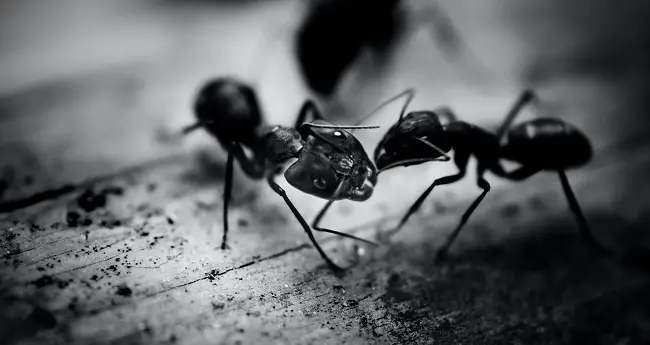
Carpenter Ants – Identification and Damages Caused
Carpenter ants are among the largest species of ants that are found in the United States. They possess a typical 3 ant body segment and usually measure between 1/2″ to 5/8″ – sometimes as big as ¾ of an inch (or 20mm).
Not only by their big size but you can identify carpenter ants by their color which can range from all-black, all-brown to red-black or red-brown.
Carpenter ants got their name because of the unique way they damage the wood in your home. Unlike wood-eating termites, they do not consume the wood but will chew and excrete to make a pathway for their colleagues.
If you are noticing the piles of particles like wood shavings on your hardwood floors, wardrobes, kitchen cabinets, etc., most likely you are having carpenter ants in or around your home.
How Does Carpenter Ants Cause Damage?
Usually, carpenter ants start by chewing wood that has a high moisture content. If left unnoticed, they will then continue making voids into the nearby wood furniture, drywall, door trims, PVC windows, and various other structures.
Outdoors they can chew through decaying wood, logs, firewood, stumps, trees, cedar siding, and much more without eating them.
Carpenter Ants vs. Termites – Identifying the Two Home Invaders
Just like termites, carpenter ants can burrow and colonize inside wooden structures. But still, they are very different.
So, if you are taking a DIY route to get rid of carpenter ants, it all starts with identifying the insects and making sure that you are targeting the right problem.
| Ant vs Termite | Carpenter Ants | Termites |
|---|---|---|
| Body | Narrow waist with three distinct body segments | Broad waist with a long body and head |
| Wings | Front wings are longer than back wings | Have wings with equal length |
| Antennae | Unique sharp-elbowed bent antennae | Straight or slightly curved antennae |
| Eating habit | Sweet foods and meats | Cellulose from wood, paper, cardboard, cotton grass, leaves, hummus, etc. |
Once you have identified the carpenter ants in your home, it’s time to fix the infestation.
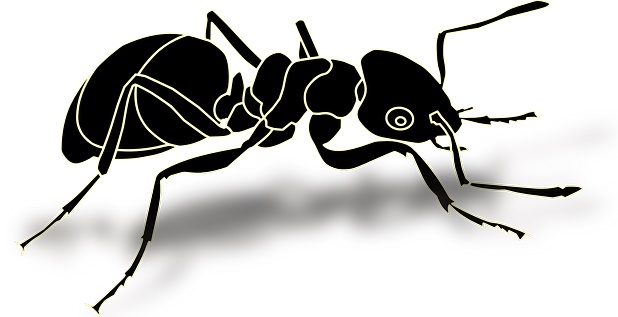
How to Get Rid of and Prevent Carpenter Ants Problem at Home?
Remember, getting rid of carpenter ants starts with finding their nests where they are actually located so that you can directly target their nests.
These nests can be either inside or outside your home and it’s not always easy to locate them.
The good way is to check if you have any source of moist, decaying wood because carpenter ants are most likely to make their nest in these places.
Also, look for:
- Frass – a finely ground wood debris like a sawdust
- Damaged wood within walls, wooden doors, or window trims
- Inside your kitchen cabinets where you place food items like jams or sweets
A few easy home remedies you can try for removing and stopping the carpenter ants, you have just located, are:
1- Boiling water
Boil a few liters of water in a stainless-steel container and then pour it directly into the ant nest.
If you want, you can add essential oils, dish soap, or a natural water-soluble insecticide to the boiled water to make it work even more effectively.
With this natural method, you can attack the ant colony directly. But be sure, as this method can be dangerous you should try it only for ants nesting outdoors. Or if using indoors, exercise extreme caution.
You should continue to treat the problem areas (a few times a week) until you see the ants no longer return.
2- Diatomaceous Earth
Diatomaceous Earth is a popular pesticide that is all-natural. It’s made from crushed algae fossils and typically acts as an abrasive material to damage the exoskeleton of ants as soon as they come in contact with it.
Just spread some DE near the ants’ nest or infested areas and you will see the ants getting killed soon.
The good thing about Diatomaceous earth is it’s deadly to insects but completely safe for animals and pets. So, you need not worry about your dogs and cats if they come in contact with the substance.
3- Water and vinegar solution
White vinegar with water solution (mixed in a 1:1 ratio) is also an effective carpenter ant deterrent.
You can spray this all-natural disinfectant solution liberally with a spray bottle along the pheromone trails of ants. The solution will disrupt them and will leave the smell which prevents the ants from coming again.
4- Essential oils like lemongrass and peppermint
Essential oils such as lemongrass, peppermint, clove, tea tree, orange, cinnamon, and cedarwood are all effective in disrupting pheromone trails and deterring ants.
Simply dampen a cotton ball with essential oil (of your choice) and wipe along windowsills, baseboards, door frames, countertops, drains, or other areas that serve as an entry point for ants.
Alternatively, you can dilute the EO in a carrier oil and with a sprayer use it as a natural ant-killing spray. Repeat this process daily for about a week and you will see the ant population disappearing gradually.
5- Natural carpenter ant bait that includes baking soda and sugar
Sugar and baking soda bait is a natural yet effective carpenter ant bait that can be used for stopping ants inside and outside. This can be made simply by mixing equal parts baking soda and powdered sugar.
Place this mixture in shallow dishes near the ant nests or at locations where they are suspected to come. The sugar present in the mixture attracts the ants while the baking soda kills them naturally.
Other than the above home remedies you can also consider spraying non-toxic insecticides to kill the ants nesting inside or outside your home.
Just make sure you treat all the trouble areas inside your home and along the fence lines, trees, and home’s foundation.
Final Thoughts
Carpenter ants in your home are tiny creatures that can become problems if present in huge numbers. Although they do not consume wood, they can chew through it causing great damage to your furniture and home structures.
As soon as you notice their signs and feel their presence, the best is to treat the areas and prevent them from returning by keeping your space clean and tidy.
Do not forget to seal the cracks or holes with a caulk sealant and get rid of unnecessary moisture by fixing leaky plumbing, faucets, sprinklers, clogged drainage areas, etc.
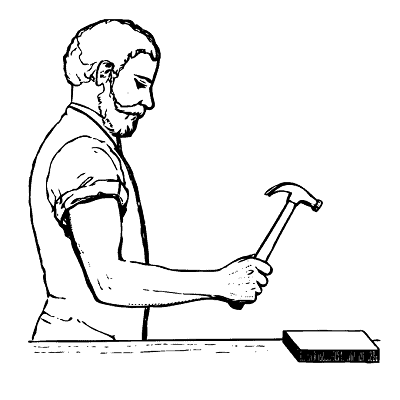
Hi, I am Mark Garner a professional carpenter, woodworker, and DIY painter. I live in the small city of Peoria, Arizona as a semi-retired woodworker. I have started this blog with a simple motive to help you with my wood experience in this sector. If you like to know more about what I love doing and how it all got started, you can check more about me here.

